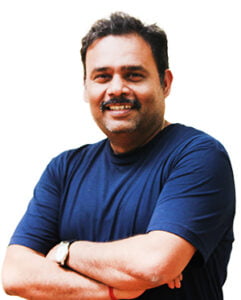0
An empty cart
You have no item in your shopping cart
 Atul Gaurav
Atul GauravCo-founder & Faculty – Pravegaa Education
Subjects: Quantum Mechanics, Classical Mechanics, and Atomic & Molecular Physics
Alumni of JNU (School of Physical Sciences), Delhi
Specialization: Classical Mechanics, Quantum Mechanics, Nuclear Physics, and Atomic Physics
Faculty Experience:
Over 15 years of teaching experience in coaching students for CSIR NET JRF, GATE, IIT JAM, and JEST exams.
Co-founder and one of the best faculty members at Pravegaa Education, renowned for his interactive teaching style and in-depth subject expertise.
YouTube Mentor:
Dedicated to online learning and mentoring through Pravegaa Education’s YouTube channel, sharing valuable insights and strategies for competitive exam preparation.
✅ Classical Mechanics:
Atul Gaurav believes Classical Mechanics is the cornerstone of Physics, essential for building a strong foundation in Quantum Mechanics and Statistical Mechanics.
His teaching approach focuses on:
Qualitative analysis of physical systems, exploring phase space and nonlinear dynamics.
Understanding symmetries through Hamiltonian formulation, canonical transformations, and Poisson brackets.
Bridging classical concepts with Lagrangian formulation via the principle of least action.
Applying concepts to problems of small oscillations, central force dynamics, and rigid body motion.
Exploring Special Theory of Relativity, discussing four-dimensional space-time coordinates using Lorentz transformation and mass-energy equivalence.
Key Topics Covered:
Newtonian & Lagrangian Mechanics
Hamiltonian Formulation & Poisson Brackets
Small Oscillations & Rigid Body Dynamics
Central Force Motion & Kepler’s Laws
Special Theory of Relativity
References:
Classical Mechanics by Herbert Goldstein
Mechanics by L.D. Landau and E.M. Lifshitz
Nonlinear Dynamics and Chaos by Steven H. Strogatz
Special Theory of Relativity by Robert Resnick
Mechanics by Kleppner and Kolenkow
✅ Quantum Mechanics:
Delve into the fascinating world of Quantum Mechanics with Atul Gaurav, where classical determinism gives way to probabilistic causality.
His teaching style emphasizes:
Wave-particle duality and the uncertainty principle through experiments like the photoelectric effect and Young’s double-slit experiment.
Simplifying abstract mathematical formulations, including Dirac notation and Hilbert space, to build strong mathematical proficiency.
Gradually advancing from one-dimensional systems (Dirac delta potential, harmonic oscillator) to multi-dimensional quantum systems.
Exploring perturbation theory, WKB approximation, and the interplay between Quantum Mechanics and Relativity.
Key Topics Covered:
Schrödinger Equation & Applications
Quantum Tunneling & Potential Wells
Angular Momentum & Spin
Perturbation Theory & WKB Approximation
Dirac Delta Function & Harmonic Oscillator
References:
Quantum Mechanics by Claude Cohen-Tannoudji
Quantum Mechanics by R. Shankar
Quantum Mechanics by D.J. Griffiths
Quantum Mechanics: Concepts and Applications by Nouredine Zettili
Modern Physics by Arthur Beiser
✅ Atomic & Molecular Physics:
Specializes in explaining atomic structure, spectroscopy, and molecular interactions with conceptual clarity and practical applications.
His teaching approach covers:
Quantum models of the atom, including Bohr’s model and Schrodinger’s wave model.
Spectral lines, selection rules, and Zeeman & Stark effects.
Molecular bonding and energy levels, including rotational, vibrational, and electronic spectra.
Key Topics Covered:
Quantum Models of the Atom
Spectral Lines & Selection Rules
Zeeman & Stark Effects
Molecular Bonding & Energy Levels
Rotational, Vibrational, and Electronic Spectra
Atul Gaurav’s teaching philosophy revolves around interactive, concept-based learning. His approach emphasizes:
Conceptual Clarity: Breaking down complex theories into simplified, real-world applications.
Multi-faceted Problem Solving: Solving problems using multiple approaches to develop critical thinking and analytical skills.
Application-Driven Learning: Linking theoretical concepts to real-world physics phenomena for better comprehension.
Regular Practice & Doubt Sessions: Assigning homework, tutorials, and unsolved problems from standard textbooks, followed by regular doubt-solving sessions.
As the co-founder and leading faculty at Pravegaa Education, Atul Gaurav is committed to empowering students through his expert guidance in Classical Mechanics, Quantum Mechanics, and Atomic & Molecular Physics. His extensive teaching experience, in-depth subject knowledge, and passion for mentoring have made him one of the most sought-after faculty members for CSIR NET JRF, GATE, IIT JAM, and JEST aspirants.
✅ Join Pravegaa Education and learn from experts like Atul Gaurav to master Physics with precision and confidence.
📺 Subscribe to our YouTube channel: Pravegaa Education for insightful lectures and exam strategies.
Alumni from JNU (School of Physical Sciences) Delhi with Expertise in Classical Mechanics, Quantum Mechanics, Nuclear Physics, and Atomic Physics.
For more insights into my teaching and expertise, subscribe to our YouTube channel: Pravegaa Education.
MEET OUR PROFESSIONAL INSTRUCTORS